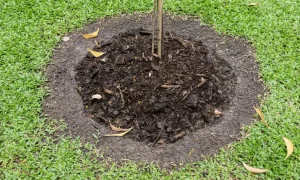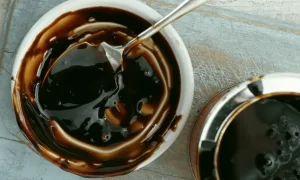Molasses: When & Why to Add to Your Plant: Molasses is a powerful, yet often overlooked tool when it comes to growing plants. Used properly, it can strengthen and enrich the foundation of your growth. Plant cultivation is a true art form – easy to learn, yet difficult if you want to advance to master. The more experience you gain and the better you master the basics. The more advanced techniques you will want to try.
One of these experts is the composition of the soil and how to perfectly match it to the plant strain and growing environment. Although there is much else to mention in the context of substrate mixing, there is one tool in the plant grower’s arsenal that is often forgotten – and that is molasses. In this article, we are going to guide you if you have the question “when should I add molasses to my plants”, or “can molasses hurt plants” in mind. So, let’s start.
Read more about What garden plants need lime?
Contents
- Molasses: Fertilizer For The Soil
- Other Benefits of Molasses
- When to Add Molasses to Plants?
- The Advantage of Molasses Compared to Ready-Made Branded Supplements
- What Exactly is Molasses?
- The Use of Molasses in Plant
- Final Thoughts: When Should I Add Molasses to My Plants?
- How often should I use molasses on my plants?
- When should I start adding molasses during flowering?
- How do you add molasses to plants?
- Can molasses hurt plants?
- What plants benefit from molasses?
Molasses: Fertilizer For The Soil
Soil is the basic medium for your plant cultivation – it’s full of nutrients and microorganisms that all work together to keep your Plant strong and healthy as they grow. While it’s important to keep the soil’s nutrient balance in the right place, it’s equally important to create a suitable environment for microorganisms to thrive in. And it is at this point that the wheat is separated from the chaff, whether you are “just” a good grower or a professional.
This is where molasses comes into play. Although it is rich in nutrients, it is primarily used as a source of carbohydrates to effectively supply the organisms in the soil with nutrients and provide the Plant with a good base for growth. The microorganisms in the soil play an essential role in Plant cultivation and must also be supplied with sufficient nutrients. By feeding them molasses, you give them what they need, whereupon they improve the texture, water retention, microorganism content, and performance of the soil – which in turn benefits your Plant.
Other Benefits of Molasses
- Improves the basic quality of the soil.
- Prevents the formation of pathogens that can harm your plants.
- Reduces salt buildup that can cause nutrient problems.
Molasses contains a good number of macro and micronutrients, all of which are of varying importance for the healthy growth of your Plant. Although both macro and micronutrients are not required in large amounts, it can sometimes be difficult to rule out a deficiency. By adding molasses to your soil regularly, you can ensure that your Plant has everything they need.
When to Add Molasses to Plants?
If you are confused with the question “when should I add molasses to my plants”, this is the part for you. You must need to know how to use molasses on plants. As plants begin to mature and flower, they need more carbohydrates than they can produce on their own. Although molasses is beneficial throughout the plant’s life cycle, it is best added when the plant is transitioning from the asexual reproductive stage to the flowering stage. This is because, during these stages, the plant’s sugar needs are higher.
Note: With the extra carbohydrates in molasses, you can give your plants a big boost and help them produce more flowers than usual.
However, before you pick up the bottle of molasses and pour it on your plants, there are a few things you should know.
The Advantage of Molasses Compared to Ready-Made Branded Supplements
When it comes to supplements, the market offers a huge range of commercial products. Although some of them are indeed efficient, they are also usually very expensive (we are talking exclusively about supplements here, not the actual nutrient fertilizers). Many of these supplements already contain molasses, as it provides nutrients in large quantities. For this reason, the main advantage of buying molasses over buying branded supplements is the real cost savings.
Tips: Molasses can usually be bought quite cheaply compared to branded supplements, although as seen, it provides most of the nutrients that you can find in the other products as well. If you buy a branded product, you are also buying yourself a piece of convenience.
What Exactly is Molasses?
Simply put, molasses is a highly viscous byproduct of sugar processing. Once you separate the actual sugar from the sugar cane, you end up with 2 products: white sugar and molasses, which consists of many minerals and residual sugar. Molasses is often used as a syrup for cooking and, as we have already pointed out, is a great source of carbohydrates for the micro-organisms that live in your soil.
However, there are different types of molasses. Some products are of much lower quality and contain preservatives, additives, or other chemicals that you don’t want near your Plant. Therefore, it is important to use organic molasses for your cultivation project. The problem with this is the high price, as the products in the supermarket are usually very expensive. However, some garden centers offer molasses for agricultural use, which is perfect for your Plant.
Furthermore, there are two types of molasses: sulfurized and unsulfurated. At this point, it gets a little confusing: both types contain at least some sulfur – a nutrient that your Plant needs. The key difference between the two products is that sulfurized molasses also contains sulfur dioxide, which acts as a preservative and antimicrobial substance. It follows, however, that this molasses kills the microbes that you are actually trying to feed.
Tips: Unsulfurated molasses contains only sulfur, but no sulfur dioxide – so your Plant will be fertilized without killing the beneficial microbes in your soil. So be sure to buy organic, unsulfured molasses.
The Use of Molasses in Plant
When you have the question in mind that “when should I add molasses to my plants”, or ”How often should I add molasses to plants”, more importantly, you should learn the use of it first. There are a few ways you can use molasses in your Plant cultivation. Often, it is incorporated into the fertilization schedule as a regular addition, or you add molasses when you are putting together the soil before the growing project begins. Since it is a very flexible resource, you can use it at any time and work well with it.
Incorporating molasses into the irrigation schedule is probably the easiest and most common way to deliver it to plants. To do this, you simply dissolve the molasses in water and water your plants with it as usual.
As for determining the right dosage, it’s mostly a matter of gaining your own experience. A good starting point is 1-2 tablespoons of molasses to 5 liters of water. Make sure that the water is lukewarm because then the molasses can dissolve more easily. From this point on, you will be able to observe what effect the molasses has on your soil and plants and adjust the dose as needed.
By using small doses, you will prevent your Plant from being unnecessarily stressed or burned by too high a concentration of nutrients, especially if they are young plants. In most cases, you will notice the great benefit of molasses during the early flowering phase; however, it is generally a good practice to use throughout the plant’s life cycle – whenever your plants need to be watered.
If you wish, you can also apply molasses in combination with your main fertilizer – but you should keep an eye on the pH of the soil, especially since adding additional substances to your fertilization schedule can cause fluctuations. As long as you know how to keep the pH under control, there should be no problems in the long run.
Adding molasses to your soil before potting your plants in it is really easy and a great way to get them off to a good start. Just use the technique mentioned earlier for making the molasses mixture and water your soil with it a few days before you put the plants in it.
Learn more about What do plants need to grow?
Final Thoughts: When Should I Add Molasses to My Plants?
You have the question in mind that “when should I add molasses to my plants”. So, you must be surprised to know that using compost tea is an excellent way to provide your Plant with a wide range of nutrients, enzymes, and microorganisms to supplement its nutrient balance. Molasses is usually the main ingredient in compost tea, as it is a giant injection of beneficial microbes that can enhance even the poorest quality soil, making it usable.
It should be mentioned that molasses is also used by hunters to attract game. Therefore, in the case of outdoor cultivation, you should definitely take precautions so that the molasses you use does not attract uninvited visitors that could eat your plants.
Frequently Answered Questions
How often should I use molasses on my plants?
Mix molasses and water to use on plants every two weeks. It’s a superb way to maintain pest-free plants.
When should I start adding molasses during flowering?
It’s recommended to start adding molasses just before the flowering process starts or during the first phase of the process.
How do you add molasses to plants?
Mix molasses with water to dissolve them. Then drip the molasses into the garden soil or the compost pile.
Can molasses hurt plants?
No, rather molasses hurt pests and harmful insects for plants. It also positively affects the plant’s growth.
What plants benefit from molasses?
Plants like tomatoes, eggplants, peppers, melons, etc. mostly benefit from molasses with consistent application and improve plants’ health.



